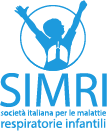Medical Reviewer: Dr. Serena Pindinelli, MD, Department of Pediatrics, Gallipoli Hospital
Reviewed by: Dr. Giuseppe Fabio Parisi, MD, PhD, Pediatric Pulmonology, Policlinico University Hospital, Catania (Updated 2024)
What Is Vocal Cord Dysfunction (VCD)?
VCD is a functional breathing disorder where the vocal cords behave abnormally—instead of opening when you breathe in and out, they close, blocking air flow. This creates symptoms that can mimic asthma but stem from the throat, not the lungs.
Normally:
-
On inhalation, vocal cords open to allow air into the lungs.
-
On exhalation, they again open, enabling sound production as air passes through the larynx.
In VCD, especially during inspiration, the cords close (a process called paradoxical adduction), creating upper‑airway obstruction that can significantly hamper airflow Respiratory Therapy+13PMC+13hopkinsmedicine.org+13ScienceDirect.
In children and adolescents—particularly teen girls around age 14—VCD is more common, though rare cases are seen even in infants PMC.
Recognizing VCD is critical: misdiagnosis may lead to unnecessary tests, ineffective—or even invasive—asthma-style therapies.
What Triggers VCD?
Various triggers have been identified:
-
Physical activity (exercise-induced episodes)
-
Gastroesophageal reflux (GERD)
-
Recent upper respiratory infections
-
Cigarette smoke or strong odors and irritants
-
Strong emotions, psychological stress, anxiety, or conversion-type disorders
Infants and neonates may experience VCD due to abnormal muscle tone or delayed psychomotor development. VCD may present as purely inspiratory, both inspiratory and expiratory, or—more rarely—purely expiratory forms.
Recognizing VCD: Symptoms, Diagnosis & Management
Symptoms in Children:
-
Sudden shortness of breath, especially on inhaling
-
Progressive difficulty breathing, tightness in the throat or chest
-
Distinctive inspiratory stridor (noisy breathing in), often misinterpreted as wheezing
-
Hoarseness, choking sensations, or a sense of suffocation—even without aspiration history
-
Symptoms do not respond to asthma medications, and notably, oxygen saturation remains normal (>97%) during severe episodes
Unlike asthma, VCD episodes are usually self-limited, rarely occur during sleep, and may not always produce audible wheezing on exam.
How Is VCD Diagnosed?
Diagnosis hinges on:
-
Careful clinical history and symptom pattern
-
Laryngoscopy during an active episode—visualizing vocal cords paradoxically closing on inspiration is diagnostic
-
Spirometry during symptomatic periods, showing a flattened or truncated inspiratory flow-volume loop, indicative of upper‑airway obstruction
Provocation tests—like exercise or exposure to triggering stimuli—may be used to reproduce an episode under controlled conditions for diagnostic clarity.
Treatment & Recovery
Management of VCD is multidisciplinary, often involving speech-language therapy, behavioral techniques, and psychological support:
-
Breathing retraining, focusing on relaxed-throat breathing, diaphragmatic control, and smooth exhalation
-
Speech therapy to teach vocal cord relaxation and recovery techniques
-
Cognitive-behavioral therapy (CBT) or stress-management to address emotional triggers
-
Addressing underlying conditions—such as GERD, allergies, or infections—can reduce recurrence
Speech therapy and breathing techniques are widely considered first-line treatments and have shown high effectiveness in both children and adults. Prognosis is generally favorable, with many adolescents seeing symptom resolution within 4–5 months.
Summary: What Parents & Caregivers Should Know
-
VCD mimics asthma but stems from the throat, not the lungs; symptoms often occur suddenly with normal oxygen levels and don’t respond to asthma medications.
-
Triggers are diverse—from exercise and infections to stress and irritants.
-
Diagnosing VCD requires careful observation, sometimes confirmed with laryngoscopy or spirometry during an episode.
-
Effective, non-invasive treatment exists—centered around breathing exercises, speech therapy, and addressing underlying triggers.
-
With proper care, most children recover well within months.
Vocal Cord Dysfunction (VCD) – Frequently Asked Questions
What is Vocal Cord Dysfunction (VCD)?
Vocal Cord Dysfunction is a breathing disorder where the vocal cords close when they should be open—especially on inhaling—so air has trouble moving through the throat. It can look like asthma but starts in the voice box (larynx), not the lungs.
How is VCD different from asthma?
Asthma is a lower-airway problem that usually responds to inhaled bronchodilators. VCD is an upper-airway problem: episodes often don’t improve with asthma medicines, oxygen levels typically remain normal, and noisy breathing is usually louder on inhalation (stridor) rather than wheeze.
What are common VCD triggers in children and teens?
Exercise, gastroesophageal reflux, recent upper-airway infections, smoke or strong odors/irritants, and stress or strong emotions. In infants, abnormal muscle tone or delayed psychomotor development can contribute.
What symptoms should parents watch for?
Sudden shortness of breath (often worse breathing in), throat tightness, inspiratory stridor (noisy in-breath), cough, hoarseness, a choking sensation, and sometimes chest discomfort. Episodes are often brief, self-limited, and rarely occur during sleep.
How is VCD diagnosed?
A careful history and exam, plus tests during symptoms. The key tests are flexible laryngoscopy—showing the cords closing on inspiration—and spirometry with a flow-volume loop that often shows a flattened inspiratory limb indicating variable extrathoracic obstruction.
What can we do during an episode at home?
Stop the triggering activity if present, use relaxed-throat, diaphragmatic breathing techniques, and resume activity gradually once symptoms settle. If severe distress occurs, seek urgent care.
What treatments help prevent or reduce episodes?
Speech-language therapy with breathing retraining is first-line. Managing triggers—such as reflux, allergies, or irritant exposure—and stress-reduction strategies (e.g., cognitive-behavioral approaches) further reduce recurrences.
What is the outlook for children with VCD?
Prognosis is generally excellent. Many children and adolescents improve markedly over weeks to months with therapy and trigger control; athletes with exercise-induced laryngeal obstruction often return to full sport after targeted therapy.
No metadata found.



